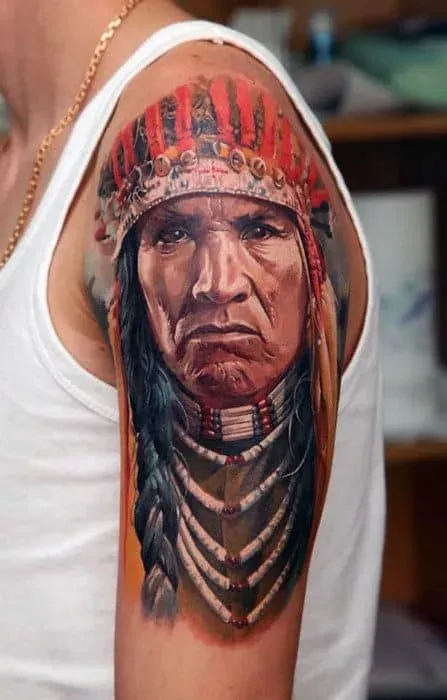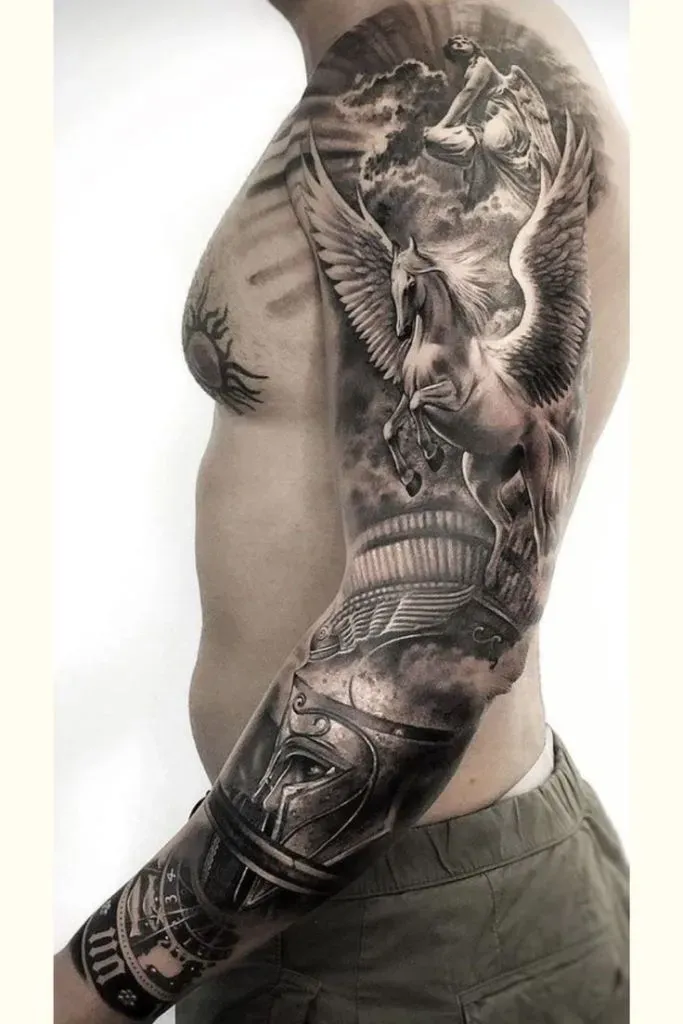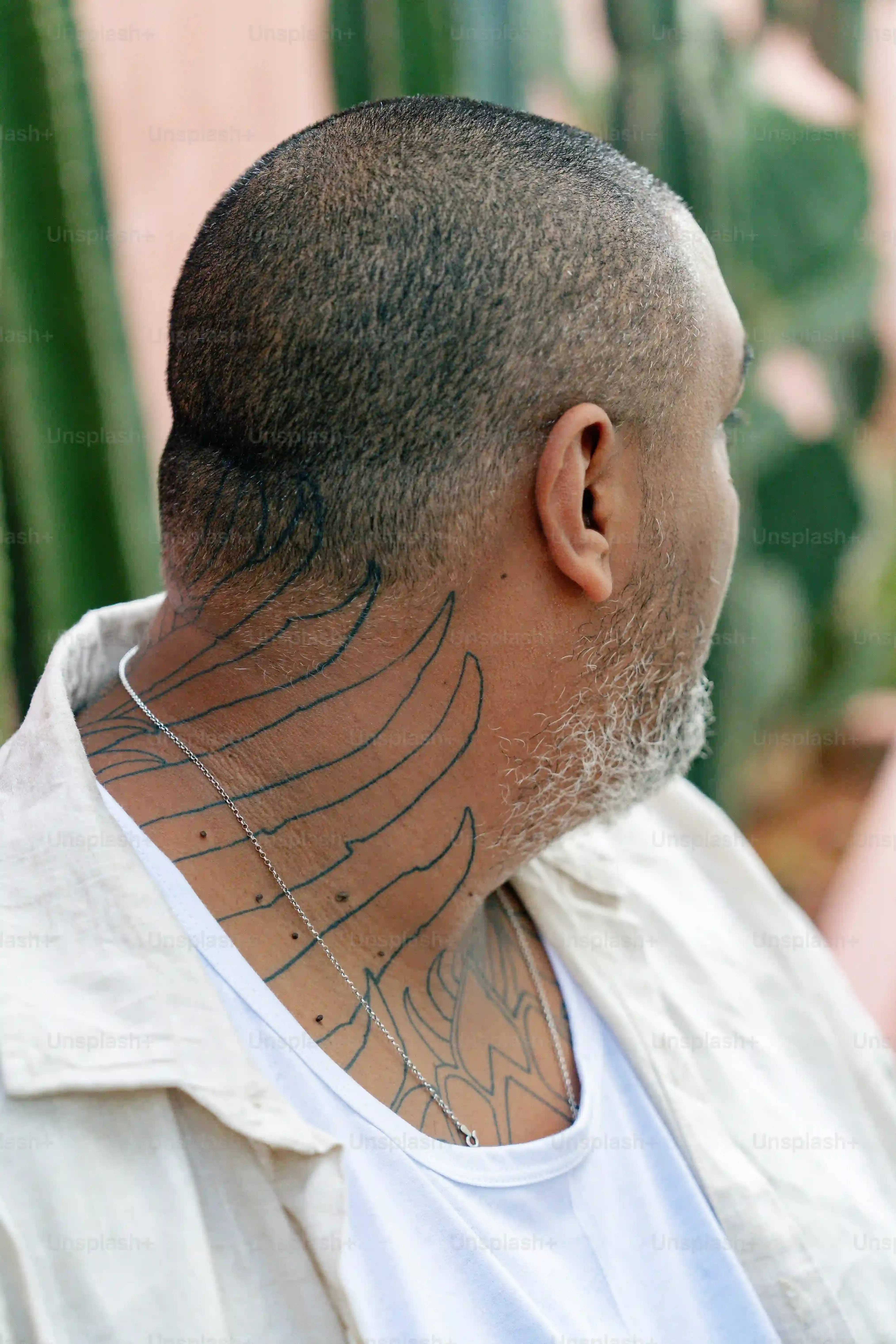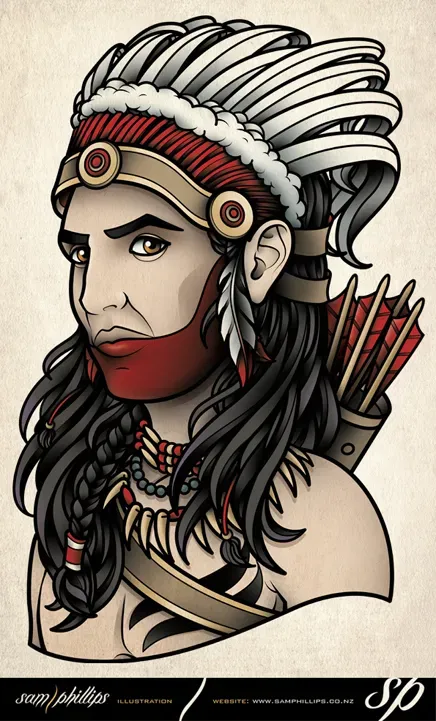Table of Contents
Thinking about getting some ink? Specifically, something with roots that run deep? You've probably seen them around – intricate patterns, powerful deities, symbols that just feel ancient. We're talking about indian tattoo designs for male, and let's be real, they're more than just skin deep. They carry history, belief, and a whole lot of personal meaning. Forget generic flash art; these designs connect you to a tradition spanning centuries. Maybe you're drawn to the strength of Shiva, the wisdom of Ganesha, or the geometric precision of a mandala. Perhaps you're looking for something that tells a story about your heritage or your personal journey. Whatever the motivation, diving into the world of Indian tattoos requires a bit more thought than picking something off a wall. This article cuts through the noise to explore some of the most striking and significant indian tattoo designs for male, what they actually mean beyond the cool factor, where they might look best on your body, and how to find an artist who won't mess it up.
Popular Indian Tattoo Designs for Male
Popular Indian Tattoo Designs for Male
Deities That Make a Statement
When you talk about Popular Indian Tattoo Designs for Male, deities are usually the first thing that comes to mind. And for good reason. Figures like Shiva, the destroyer and transformer, are incredibly popular. People get Shiva tattoos for strength, meditation, or just that powerful, almost wild look. You also see a lot of Ganesha, the remover of obstacles. He's the go-to for good luck, new beginnings, and wisdom. My buddy got a Ganesha on his forearm before starting his own business – felt like getting a cosmic co-signer. These aren't just pictures; they represent aspects of life and spirituality that resonate deeply.
Symbols with Serious Weight
Beyond the gods, there's a whole universe of symbols that are huge in Popular Indian Tattoo Designs for Male. The 'Om' symbol is probably the most recognizable. It's the sound of the universe, the vibration of creation. Simple, yet incredibly profound. You see it everywhere, from tiny wrist tattoos to larger pieces integrated into other designs. Mandalas are another major player. These intricate geometric patterns represent the cosmos, balance, and meditation. Getting a mandala can be a seriously calming process, both in design and in meaning. They look amazing on shoulders, backs, or even knees.
- Om Symbol: Universal sound, creation, peace.
- Mandala: Cosmos, balance, meditation, intricate patterns.
- Trishul (Shiva's Trident): Power, destruction of evil, three gunas.
- Swastika (ancient symbol, NOT the Nazi version): Auspiciousness, prosperity, good fortune.
- Lotus Flower: Purity, spiritual awakening, overcoming obstacles.
Animals and Motifs Telling Tales
It's not all deities and symbols, though. Many Popular Indian Tattoo Designs for Male draw from nature and cultural motifs. Think elephants – they represent strength, wisdom, and loyalty. A powerful animal that translates well into bold tattoo art. Peacocks, with their stunning feathers, symbolize beauty, royalty, and immortality. Then there are traditional patterns like paisleys or tribal art from specific regions in India. These designs often have roots in ancient art forms and can be incredibly detailed. Choosing one often comes down to personal connection, maybe a design linked to your family's origin or a characteristic you admire.
Deep Meanings Behind Indian Tattoo Art
Deep Meanings Behind Indian Tattoo Art
Beyond the Ink: Understanding the Symbolism
Alright, so we've looked at some cool designs, but let's talk about why people actually get them. It's not just about looking tough or spiritual on Instagram. TheDeep Meanings Behind Indian Tattoo Artare really what give them their power. Take that Shiva tattoo we talked about. It’s not just a dude with snakes and a trident; it's about confronting destruction to make way for creation, about the cycle of life and death. Getting Shiva isn't just a style choice; for some, it's a reminder to embrace change or find strength in chaos. The Om symbol? Simple lines, profound meaning – the sound of existence itself. It’s a constant nudge toward mindfulness or connection to something larger. These aren't trivial pictures; they are loaded with intent, history, and often, personal prayers or philosophies etched into skin. It's a commitment to carrying that meaning with you, literally.
Choosing the Best Placement for Your Indian Tattoo
Choosing the Best Placement for Your Indian Tattoo
Visibility vs. Discretion: Where Do You Want It Seen?
Alright, you've picked a killer design. Now, where the heck does it go?Choosing the Best Placement for Your Indian Tattooisn't just about finding a spot that looks cool. It's about how much you want to show it off. A bold Ganesha on your forearm is a statement piece, visible to pretty much everyone you interact with daily. Great if you want to wear your beliefs or heritage on your sleeve, literally. Less ideal if your job involves convincing conservative clients you're not secretly worshipping pachyderms. Think about your lifestyle, your workplace, and who you want to see this artwork. Inner bicep, upper back, or chest pieces offer more control over visibility. You can show them off when you want, or keep them under wraps when needed. It’s a practical consideration that sometimes gets overlooked in the excitement of getting inked.
Matching Size and Flow to Body Shape
The size and shape of your chosen Indian tattoo design heavily influence where it should go. A large, intricate mandala needs space to breathe; trying to cram one onto your ankle won't do it justice and will likely look like a smudged mess in a few years. Big pieces, like a full back Shiva or a large chest piece, require significant real estate. Smaller, more delicate symbols like Om or a tiny lotus can work well on wrists, ankles, or behind the ear. Consider the natural lines and curves of your body. A design that flows with your musculature or bone structure will look far better and more organic than one that fights against it. A good artist can help you visualize this, maybe even draw it on with a marker first. Don't skip this step; it's like trying on clothes before buying them.
- Forearm: High visibility, good for medium to large designs.
- Upper Arm/Shoulder: Versatile, good for various sizes, can be covered.
- Chest/Back: Ideal for large, complex pieces, less visible daily.
- Wrist/Ankle: Good for small, simple symbols.
- Calf: Popular spot, decent size range, visible with shorts.
Pain Tolerance and Future Plans
Let's talk pain, because yeah, it's a factor. Some spots just hurt more than others. Areas with thin skin directly over bone, like ribs, feet, or elbows, tend to be more sensitive. Fleshier areas like the outer bicep or calf are generally less painful. If this is your first tattoo or you have a low pain threshold, maybe avoid that massive sternum piece for your first dive into Indian tattoo designs for male. Also, consider how the tattoo might age. Areas that see a lot of sun or friction might fade or blur faster. And again, think about your career path. While attitudes are changing, highly visible tattoos on hands, necks, or faces can still raise eyebrows in certain professions. Make sure you're comfortable with the potential implications before committing to a spot that's always on display.
Finding a Skilled Artist for Indian Tattoo Designs for Male
Finding a Skilled Artist for Indian Tattoo Designs for Male
Why the Right Artist Matters (A Lot)
you've got the design idea, you know where you want it, now comes arguably the most critical part: finding the person who's actually going to put this permanent artwork on your body.Finding a Skilled Artist for Indian Tattoo Designs for Maleis not like picking a random person off Craigslist to fix your leaky faucet. This requires someone who understands the nuances of the style, the intricate line work, and maybe even a bit of the cultural weight behind the symbols. A generic tattoo artist might be great at traditional American flash, but can they nail the delicate details of a Ganesha or the complex geometry of a mandala? Probably not without looking like a kid tried to draw it with a crayon. You need someone with a portfolio that screams "I get this stuff," not "I can trace anything." Look for artists who specifically showcase detailed, fine-line work, or even better, examples of Indian or culturally-inspired tattoos they've done before. Don't be shy about asking questions during a consultation; it's their chance to prove they're the right fit, and your chance to avoid walking around with a permanent regret.
What kind of questions should you ask a potential artist?
- Have you done Indian-style tattoos before? Can I see pictures?
- How do you approach culturally significant designs?
- Can you freehand or stencil complex patterns like mandalas effectively?
- What's your process for custom designs based on traditional motifs?
- How do you ensure the lines stay crisp and don't blur over time?
Final Thoughts on Indian Tattoo Designs for Male
So, you've considered the Shiva, the Ganesha, maybe a fierce Durga or a complex geometric pattern. You've thought about where it fits, not just on your arm, but in your life. Choosing an indian tattoo design for male isn't like picking out a new shirt; it's a commitment to carrying a piece of history and meaning with you. It requires respect for the culture it comes from and careful consideration of what it represents. Find an artist who understands the nuances, someone who won't just copy a picture but can translate the spirit of the design onto your skin. Get it right, and you'll have more than just a cool tattoo; you'll have a story etched into you, a visual declaration of something significant. Get it wrong? Well, that's what laser removal is for, I guess.